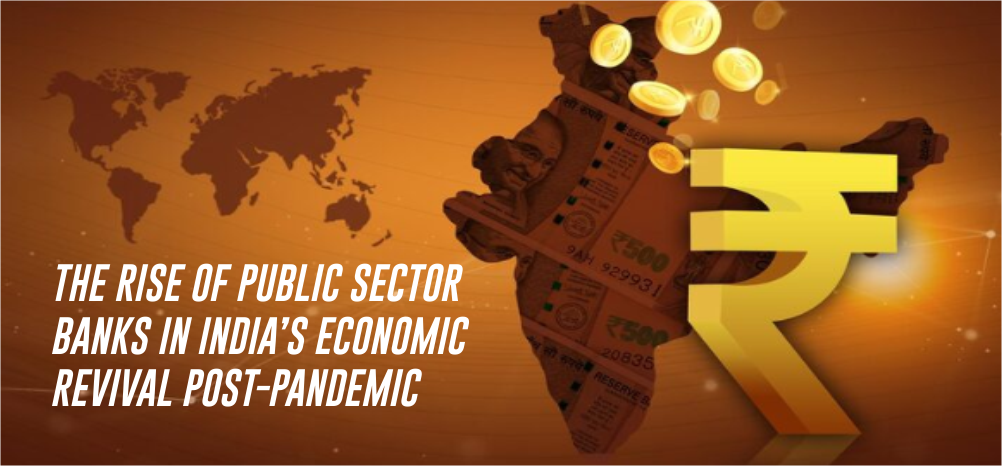The banking industry in India has historically been one of the most stable systems globally, even during periods of global upheaval. The government has consistently promoted financial inclusion through various initiatives aimed at bringing the underbanked population into the formal banking system. According to the IMF’s Financial Sector Assessment Program (FSAP), India’s financial system has become increasingly resilient and diverse, supported by rapid economic growth and robust policy frameworks.
India’s banking network today includes 12 public sector banks, 21 private sector banks, 11 small finance banks, 44 foreign banks, and five payment banks. Over 100 Digital Banking Units are operational in rural and semi-urban areas, enhancing last-mile access. In 2024, the combined assets of public and private sector banks stood at Rs. 16,128,080 crore (US$ 1,861.72 billion) and Rs. 1,09,52,458 crore (US$ 1,264.28 billion), respectively, with public sector banks accounting for nearly 60% of total assets. Interest income in the same year reached Rs. 11,09,730 crore (US$ 128.1 billion) for public banks and Rs. 8,29,049 crore (US$ 95.7 billion) for private banks.
Digital payments have become the backbone of the Indian banking system. UPI’s share in digital payments rose to 83.7% in FY25, processing 185.8 billion transactions worth Rs. 261 lakh crore (US$ 3.05 trillion), up 41% year-on-year. Over the past five years, UPI transaction volumes grew from 375 crore in 2018 to 17,221 crore in 2024, while values rose from Rs. 5.86 lakh crore (US$ 67.71 billion) to Rs. 246.83 lakh crore (US$ 2,852 billion), marking CAGRs of 89.3% and 86.5%, respectively. As of July 2024, 602 banks were actively using UPI. Other digital modes also expanded strongly: IMPS transactions grew by 9% in volume to 467 million and 11% in value to Rs. 6,29,000 crore (US$ 74.7 billion); FASTag transactions rose by 8% in both volume and value, reaching Rs. 6,115 crore (US$ 733 million); and AePS transactions increased 26% in volume and 35% in value to Rs. 32,493 crore (US$ 3.88 billion). India’s mobile wallet industry is projected to grow at a CAGR of 23.9% between 2023 and 2027.
Supporting this digital shift, banking infrastructure has also expanded. As of June 2024, India had 15,17,580 micro-ATMs, along with 1,26,772 on-site and 90,142 off-site ATMs and CRMs, while 100% of new bank account openings in rural India are being done digitally. At the same time, cash remains important: India’s currency in circulation rose 157% between 2014 and 2024, with ATMs up 32% and bank branches expanding 36%, according to CMS Info Systems.
India’s fintech ecosystem, already the third largest in the world, is valued at Rs. 9,61,593 crore (US$ 111 billion) and is expected to reach Rs. 36,47,123 crore (US$ 421 billion) by 2029. More than 2,000 DPIIT-recognised fintech startups are operating, with the digital consumer lending market alone projected to exceed Rs. 62,37,360 crore (US$ 720 billion) by 2030, representing nearly 55% of the total digital lending opportunity in the country.
NRI deposits have also witnessed a strong surge. Between April and December 2024, inflows into NRI deposit schemes rose 42.8% to Rs. 1,15,477 crore (US$ 13.33 billion), compared to Rs. 80,825 crore (US$ 9.33 billion) during the same period in 2023, according to RBI data.
On the monetary policy front, in June 2025 the MPC reduced the policy repo rate from 6.25% to 5.50%, cut the Standing Deposit Facility (SDF) to 5.25% and the MSF and Bank Rate to 5.75%, while shifting its stance from accommodative to neutral. On August 6, 2025, the MPC held rates steady, retaining its neutral stance to support growth amid easing inflation.
On November 6, 2024, RBI Deputy Governor Mr. T. Rabi Sankar launched the Unified Lending Interface (ULI) at the Business Standard BFSI Summit in Mumbai. The ULI aims to democratize access to credit for the private sector, similar to how the Unified Payments Interface (UPI) transformed digital payments.
According to the BCG Banking Sector Roundup Report of 9M FY23, credit growth was expected to hit 18.1% in FY23. BCG predicts that the proportion of digital payments will grow to 65% by 2026.
According to RBI’s Scheduled Banks’ Statement, deposits of all scheduled banks collectively surged by a whopping Rs. 2,33,56,673.93 crore (US$ 2,752.38 billion) as on April 18, 2025.
As of April 18, 2025, bank credit stood at Rs. 1,86,56,448 crore (US$ 2,198.50 billion).
Indian tourists in the UAE will soon be able to use UPI payments at more merchant locations, starting with Dubai Duty-Free. This initiative will enhance cross-border transactions, benefiting over 12 million Indian visitors annually.
The Defence Accounts Department (DAD) has entered into Memoranda of Understanding (MoUs) with four banks in New Delhi. This partnership will establish SPARSH [System for Pension Administration (Raksha) Service Centres at 1,128 branches of these four banks nationwide. It aims to enhance last-mile connectivity for pensioners, particularly in remote regions.
Google India Digital Services (P) Limited and NPCI International Payments Ltd (NIPL), have signed a Memorandum of Understanding (MoU) on 17th January 2024 to expand the transformative impact of UPI to countries beyond India.
The Warehousing Development Regulatory Authority and Punjab & Sind Bank signed Memorandum of Understanding to facilitate low interest rate loans to farmers on February 5, 2024.
Fincare Small Finance Bank Limited (Fincare) and AU Small Finance Bank Limited (AU) has merged, with AU being the surviving entity (merged entity).
On 1 July 2023, the merger of HDFC Limited into HDFC Bank was executed with 42 HDFC Bank equity shares of Rs. 1 (US$ 0.012) face value for every 25 HDFC Limited shares of Rs. 2 (US$ 0.023) each fully paid-up.
In March 2024, Kotak Mahindra Bank acquired Sonata Finance Pvt. Ltd. for Rs. 537 crore (US$ 62.5 million), marking a significant strategic move to bolster its presence in the microfinance sector.
Shriram Housing Finance Limited (SHFL), a provider of affordable housing finance services, was acquired by Warburg Pincus for Rs. 4,757 crore (US$ 554 million) on May 13, 2024. It was a key acquisition with 100 percent stake acquired.
The BFSI sector in India saw 64 M&A and private equity (PE) deals in Q3 CY24, with a total value of Rs. 27,472 crore (US$ 3.2 billion). High-value deals exceeding Rs. 2,576 crore (US$ 300 million) accounted for nearly Rs. 12,878 crore (US$ 1.5 billion), as per data by Grant Thornton.
In September 2024, IDFC FIRST Bank completed its reverse merger with parent IDFC Limited, offering 155 equity shares for every 100 shares held in IDFC Limited.
In 2024, Kohlberg Kravis Roberts & Co. (KKR) acquired a controlling stake in HDFC Credila, India’s largest education loan NBFC, in a deal worth Rs. 9,444 crore (US$ 1.1 billion).
In 2024, Indian corporates raised Rs. 58,120 crore (US$ 6.77 billion) through over 230 private credit deals, with NBFCs being active participants. The total for private credit deals, including those by NBFCs, is expected to reach up to Rs. 85,850 crore (US$ 10 billion) in 2025.
In 2024, the International Finance Corporation (IFC) made a Rs. 3,434 crore (US$ 400 million) investment in Bajaj Finance.
The Government of India has been supportive of the banking sector in the country, especially on the financial inclusion agenda. A flagship program, the Pradhan Mantri Jan Dhan Yojana (PMJDY), was launched in August 2014 which aims to provide universal banking services to the unbanked by setting up bank accounts for them and issuing payment cards to all. As of 2023-24, the number of bank accounts—opened under the government’s flagship financial inclusion drive ‘Pradhan Mantri Jan Dhan Yojana (PMJDY) reached over 51.11 crore beneficiaries and deposits in the Jan Dhan bank accounts totaled over Rs. 2,17,701 crore (US$ 25.13 billion) till December 15, 2023.
India strengthens banking sector with ‘Baanknet,’ a unified e-auction platform enhancing PSB recoveries, transparency, and credit availability.
In March 2023, India Post Payments Bank (IPPB), in collaboration with Airtel, announced the launch of WhatsApp Banking Services for IPPB customers in Delhi.
Rising income is expected to enhance the need for banking services in rural areas, and therefore, drive the growth of the sector.
The digital payments revolution will trigger massive changes in the way credit is disbursed in India. Debit cards have radically replaced credit cards as the preferred payment mode in India after demonetisation. In December 2022, Unified Payments Interface (UPI) crossed 7.82 billion transactions worth Rs. 12,82,000 crore (US$ 146.48 billion).
The RBI has launched a pilot to digitalize KCC lending in a bid for efficiency, higher cost savings, and reduction of TAT. This is expected to transform the flow of credit in the rural economy.
Digital modes of payments have grown by leaps and bounds over the last few years. As a result, conventional paper-based instruments such as cheques and demand drafts now constitute a negligible share in both volume and value of payments. In November 2022, RBI launched a pilot project on central bank digital currency (CBDC). The platform is called NDS-OM CBDC. The Central bank stated that the use case for the wholesale digital rupee is for the “settlement of secondary market transactions in government securities “as it would reduce transaction costs.
Digitalization of Agri-finance was conceptualized jointly by the Reserve Bank and the Reserve Bank Innovation Hub (RBIH). This will enable delivery of Kisan Credit Card (KCC) loans in a fully digital and hassle-free manner.
India’s banking sector stands at the cusp of a transformative era, driven by digital innovation, structural reforms, and a strong push for financial inclusion. With rising adoption of technology, robust policy support, and growing demand across domestic and global markets, the industry is well-positioned to expand its reach and deliver sustainable growth. Looking ahead, India’s banks will continue to play a pivotal role in fuelling economic progress, empowering communities, and shaping the country’s journey as a global financial powerhouse.
India’s banking sector is entering a dynamic phase, powered by digital innovation, strong policy support, and expanding financial inclusion. With technology transforming access, rising credit demand, and deeper integration with global markets, the industry is set to drive sustainable growth. Going forward, India’s banks will continue to empower people, strengthen businesses, and play a central role in the country’s journey towards becoming a leading global financial hub.















